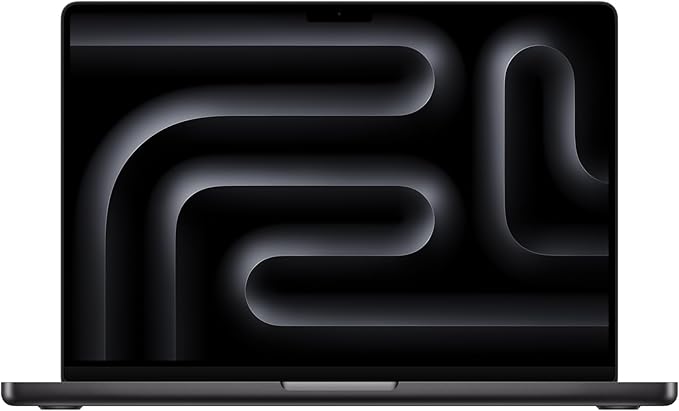Looking for the best laptop for PLC programming in 2025? Whether you’re an automation engineer, an industrial electrician, or a student diving into TIA Portal or Studio 5000, you need a laptop that can keep up—not slow you down.
We’re not talking about regular office laptops here. PLC programming laptops need to run heavy-duty software like Siemens TIA Portal, Rockwell Studio 5000, GX Works, and sometimes even full-blown SCADA systems. You’ll need something reliable, powerful, and flexible—especially if you’re switching between fieldwork, simulation, and design.
Let’s break it all down and help you find the perfect machine.
What Makes a Good Laptop for PLC Programming?
PLC software isn’t lightweight. It eats up RAM, hits your CPU hard, and often requires virtual machines (VMs) or 64-bit Windows Pro. Here’s what you really need to look for:
PLC programming laptop requirements:
- Powerful processor (Intel i7 / Ryzen 7 or better)
- At least 16GB RAM (go for 32GB if you use VMs)
- Fast SSD storage (minimum 512GB; 1TB is ideal)
- Windows 10/11 Pro (many PLC apps require Pro, not Home)
- Full-size ports (especially Ethernet for direct PLC connection)
- Long battery life & durability (field work can be demanding)
Best Laptops for PLC Programming in 2025
Here are 7 top picks that hit the mark for performance, portability, and PLC-specific features.
💼 1. Lenovo ThinkPad P1 Gen 7
Best Overall for Engineers
If you’re looking for something powerful and rugged, the ThinkPad P1 Gen 7 is hard to beat. It’s got an Intel Core Ultra 9 processor, 32GB RAM, a lightning-fast SSD, and most importantly—a native Ethernet port. Perfect for on-site programming and virtual machine use.
Why it’s great:
- Military-grade durability
- Long battery life (10+ hours)
- Pro-grade keyboard for long coding sessions
- Native Ethernet = no dongles
🖥 2. Dell XPS 17 (9750)
Best for Office-Based PLC Work
Need a big screen and serious power? The Dell XPS 17 comes with an i9 chip, RTX graphics, and a stunning 17” UHD+ display. It’s a multitasking monster, ideal for running TIA Portal, HMIs, simulations, and even some CAD.
What stands out:
- Gorgeous 4K screen
- Plenty of power for VMs and large projects
- Great for desktop-like workflows
- Downside: no built-in Ethernet (needs adapter)
🎓 3. Acer Aspire 5 (2025)
Best Budget Laptop for Students & Beginners
On a budget but still need decent performance? The Acer Aspire 5 packs a Ryzen 7 CPU, 16GB RAM, and SSD storage at a price that won’t break the bank. It’s a great entry-level machine for students learning PLC basics.
What you get:
- Very affordable
- Solid for TIA Portal (basic projects)
- Lightweight and easy to carry
- Downside: No Ethernet port, not ideal for heavy VM use
✏️ 4. Microsoft Surface Laptop Studio 2
Best for HMI Design & Touch Interaction
If you’re working on HMI interfaces or love touch-based interactions, this one’s a dream. The hinged touchscreen and Surface Pen make designing interfaces a breeze. Under the hood, it’s packing Intel Core Ultra 7 and plenty of RAM.
Why it’s unique:
- Great for sketching interfaces
- Beautiful screen
- Smooth performance with PLC software
- Cons: Needs Ethernet adapter
🍏 5. MacBook Pro 16” (M4 Max)
Best for Virtualization Pros Who Love macOS
Macs aren’t usually first pick for PLC work, but if you’re tech-savvy and know your way around Parallels or Boot Camp, the new M4 MacBook Pro is blazing fast. With amazing battery life and that famous XDR display, it’s great for on-the-go development.
Quick take:
- Insane battery (up to 18 hours)
- Ultra-fast performance
- Best-in-class display
- But: No Ethernet, and Windows is virtualized
🛠 6. HP ZBook Fury G10
Best for SCADA and High-End Simulation
If you’re building complex systems or running simulation software alongside PLC apps, the ZBook Fury is your workstation beast. It features a Xeon CPU, 64GB RAM, and Nvidia RTX A-series graphics for extreme performance.
Why pros love it:
- Built for enterprise use
- Handles huge workloads
- Native Ethernet & workstation graphics
- Pricey and heavy (but worth it if needed)
🎨 7. ASUS ProArt Studiobook 16
Best for Engineers Doing Both Programming and Design
This one’s for those who need color accuracy and performance in one package. With a 4K OLED screen, Ryzen AI 9 CPU, and RTX 4070 GPU, it’s a hybrid of creative and technical horsepower.
What makes it great:
- Stunning 4K OLED for HMIs
- Fast and fluid even with heavy apps
- Affordable for what it offers
- No Ethernet; not made for harsh environments
Key Tips Before You Buy
- Ethernet is a must for direct PLC communication. If the laptop doesn’t have a port, get a high-quality USB-to-Ethernet adapter.
- Battery life matters if you’re on the move all day.
- Windows Pro over Home — many PLC tools won’t even install on Home versions.
- Avoid low-end CPUs like Intel i3 or Ryzen 3—they just can’t handle the software.
- Think about future use: Do you plan to use VMs? Run SCADA? Choose accordingly.
Final Thoughts: Which One Should You Choose?
The right laptop for PLC programming depends on your daily workflow:
- Field work + Ethernet: ThinkPad P1 Gen 7
- Office use + power: Dell XPS 17
- Student-friendly: Acer Aspire 5
- Design + touch: Surface Laptop Studio 2
- macOS lovers: MacBook Pro (M4)
- Heavy simulation: HP ZBook G10
- Programming + visuals: ASUS ProArt 16
No matter your budget or role, picking the right laptop will save you hours of frustration and make your PLC work smooth and efficient.
Frequently Asked Questions
If you’re doing PLC programming, grab a laptop with a quad-core Intel i5 or Ryzen 5, at least 16 GB RAM, SSD for speed, and plenty of USB ports. A 14″ or 15″ screen with good resolution helps reading ladder diagrams, and decent battery life keeps you coding on the go.
Honestly, for PLC work, you don’t need a desktop-beating monster—prioritize solid single-core power. An Intel Core i5-12400 or AMD Ryzen 5 5600X nails that balance between fast cycles and smooth multitasking. They launch IDEs like TIA Portal without hiccups and sip power, so your laptop stays cooler in debug sessions.
Honestly, for diving into PLC programming, think of RAM like your desk space: 8 GB will do for small hobby projects, 16 GB is the sweet spot for smoother performance, and if you’re running big virtual machines or complex industrial setups, bump it to 32 GB. Anything beyond is overkill.
Honestly, go for a laptop with a speedy processor—like an Intel i5/i7 or AMD Ryzen 5/7—plus at least 16 GB of RAM and a fast SSD. A comfy keyboard, 14–16″ screen, solid cooling for marathon sessions and ideally a matte display. Good battery life and sturdy build seal the deal.











